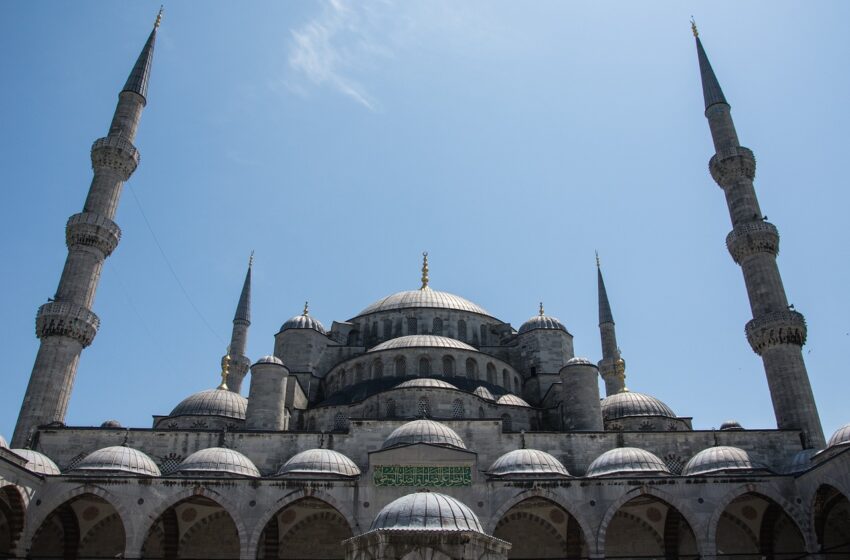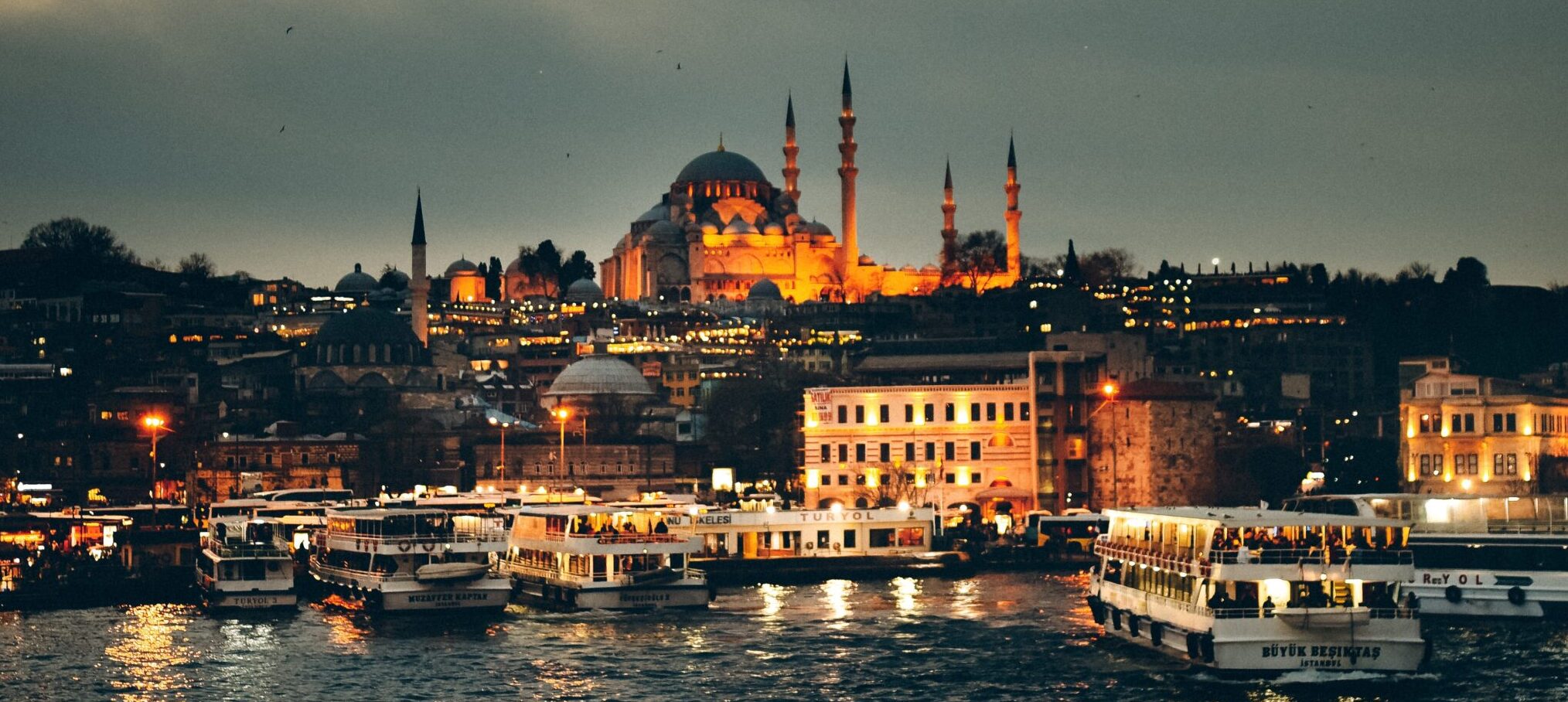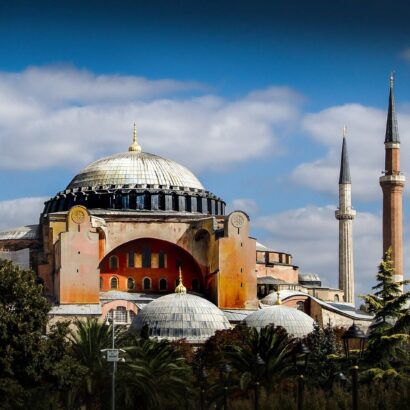Historical Importance
Completed in 1616 by the order of Sultan Ahmet I, Blue Mosque is the most central mosque in Istanbul built by the Ottomans. The Mosque isn’t called “Blue Mosque” in Turkish though, it is named “Sultan Ahmet Mosque“, named after Sultan Ahmet I, who gave the order.
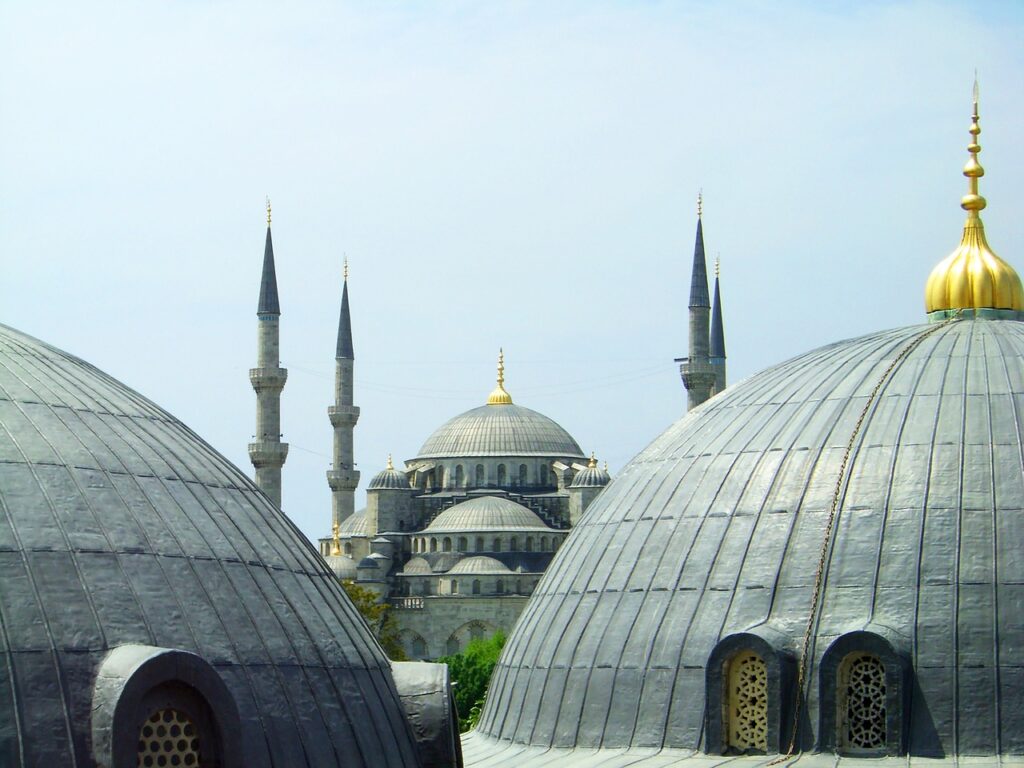
Sultan Ahmet Mosque, or the “Blue Mosque”, is one of the largest and most beautiful mosques built by the Ottomans and it is especially well-known for its blue ceramic tiles. However, there is a story about its minaret towers as well. Even today, in all of Turkey, where there are tens of thousands of mosques, there are only five mosques that have 6 minarets. Blue Mosque is the oldest, and the only one built during the Ottoman Empire. In the 17th century, the mosque to have 6 minarets was Masjid-i Haram, the holiest place of all in Islam, located in Mecca (where the Holy Kaaba is).
When a new mosque emerged in the capital of the Ottoman Empire with the same number of minaret towers, this created controversy. Imams of Mecca demanded two of the minarets of Sultan Ahmet Mosque be removed as it could not be compared with the holiest place on earth. Sultan Ahmet I, a young and highly intelligent emperor, came up with a clever solution, and constructed a 7th minaret to Masjid-i Haram, thus resolving the issue. Because of this story, Blue Mosque will always be the first mosque after Masjid-i Haram to have six minarets in the world.
Architecture and Blue Ceramic Tiles of Blue Mosque
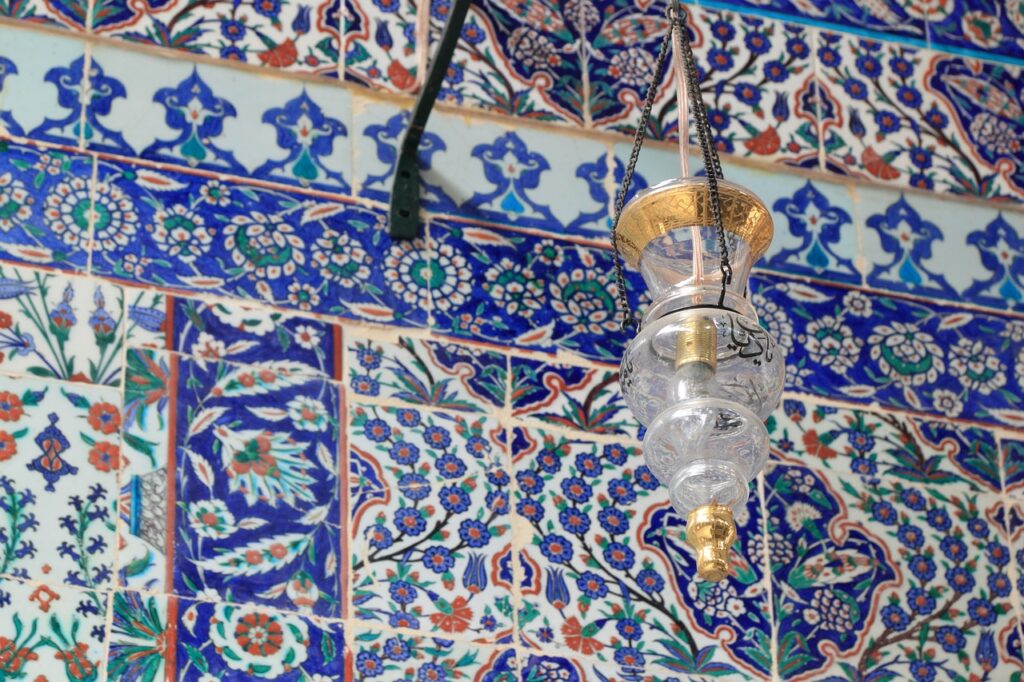
Designed by Sedefkar Mehmed Aga, who was a student of the legendary architect Sinan, Blue Mosque has impressive architecture both on its exterior and interior. On the exterior, the dome and an unusual amount of minarets strike our attention. Six minaret towers with 16 balconies represent Sultan Ahmet I, the 16th Sultan to sit on the throne. A giant dome is supported by semi-domes gracefully reach the ground where a spacious courtyard embraces the front. A beautiful marble fountain decorates the courtyard, and we reach the entrance.
Inside, the mosque is decorated with over 20,000 hand-made ceramic tiles from Iznik. In over twenty thousand tiles, over 50 different tulip patterns can be found. The color blue and turquoise is dominant, hence the name “Blue Mosque”. Beautiful Islamic calligraphy decorates the interior on its walls and dome, and stained glass windows introduce a gentle contrast and harmony of color. The captivating beauty of Blue Mosque is truly a feast for the eyes.
Tomb of Sultan Ahmet
Albeit living a short life, Sultan Ahmet I surely left his mark on Ottoman history. Throned at the age of 13, Sultan Ahmet ruled for 14 years and died at the young age of 27. Yet in his short-lived life, he managed to leave us one of the most spectacular architectural wonders of the Ottoman era and also did something that changed the course of history: re-designed the succession system. Whether it was good or bad for the empire, that’s another story, but Sultan Ahmet’s decision to change the way the next Sultan was chosen dramatically changed the course of Ottoman history.
Just like many other sultans, Sultan Ahmet is also buried in a tomb dedicated to him and his family located outside the mosque built by him. Sultan Ahmet’s tomb consists of the graves of his children, out of which two of them became sultans themselves, Osman II, and Murad IV, the grave of his wife Kösem Sultan who later became one of the most powerful women in Ottoman history and ruled as a regent queen, and of course, his own grave. The tomb itself is quite large and is decorated with stunning ceramic tiles and presents Ottoman art at its peak.
Location of Blue Mosque
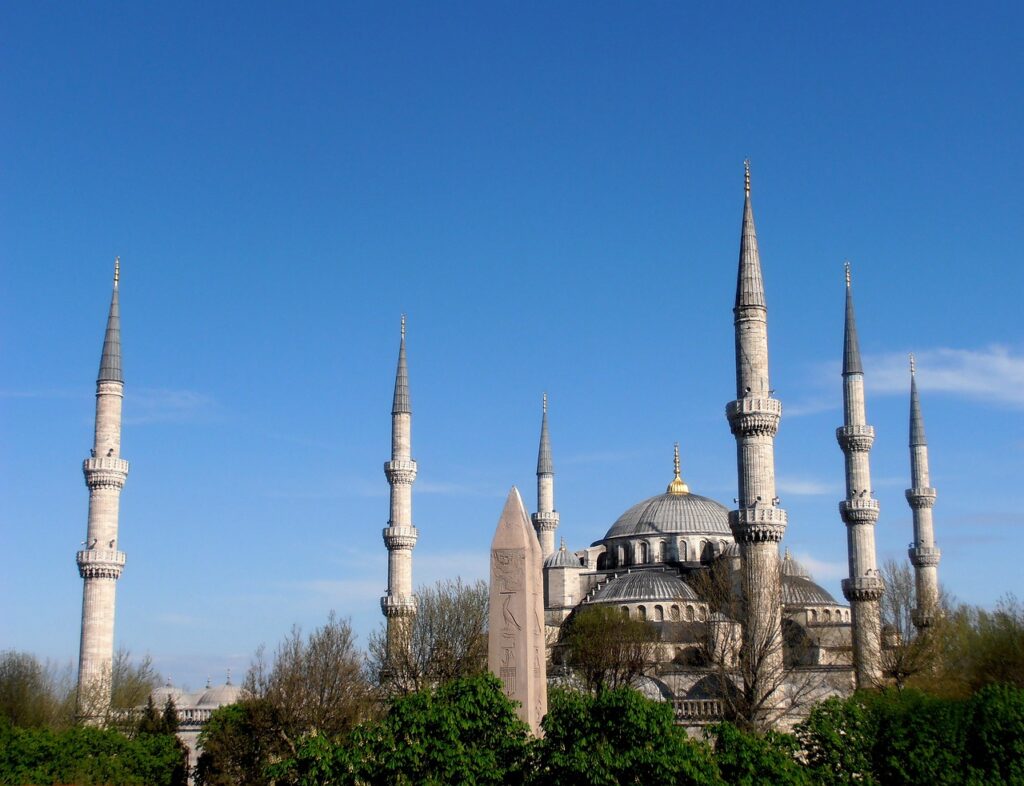
Blue Mosque is perhaps the most central historical site in all of Istanbul, together with Hagia Sophia right in front of it. A visit to the Blue Mosque can conveniently be combined with a visit to Hagia Sophia, the Hippodrome, the Turkish and Islamic Arts Museum, Arasta Bazaar, and the Great Palace Mosaics Museum. All are within the vicinity, all 2-3 mins walking distance from each other. Furthermore, if you walk a few extra minutes, you can also reach the Topkapi Palace, or in another direction, the Basilica Cistern, and the Grand Bazaar and Istanbul Archeological Museum would take a short 10-15 mins walk to reach.
Conclusion
Blue Mosque is without a doubt, one of the most well-known and visited historical sites in Istanbul and in fact, in all of Turkey. It is a must-see, must-visit site, with over 400 years of history reflecting Ottoman art and architecture at its peak, and will always be one of the most iconic landmarks of this city. Make sure you include Blue Mosque in your tour plan when visiting Istanbul, and read our tipstanbul guide to get the most out of your experience:
Top 10 Blue Mosque Tips
Related:

